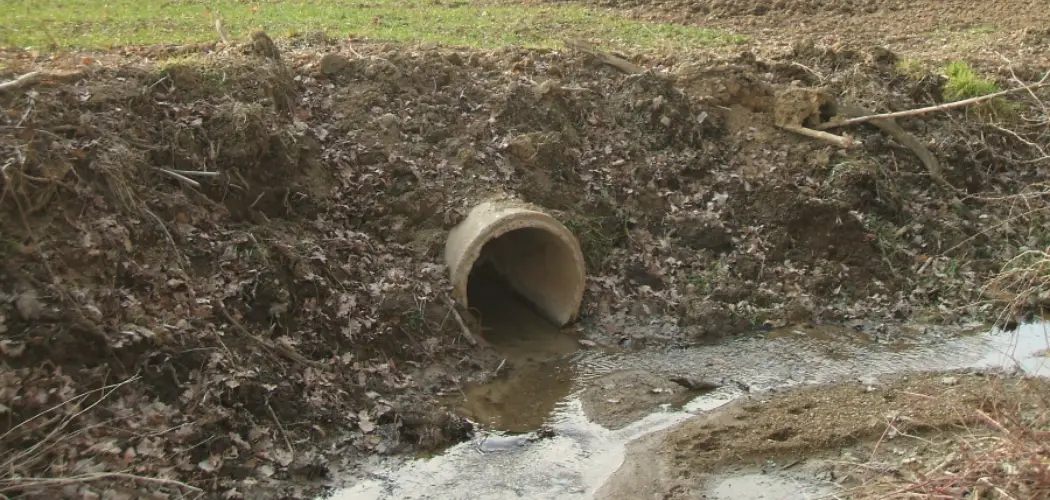Leach lines, crucial components of a septic system, are responsible for the final treatment and disposal of effluent from the septic tank into the soil. However, when these lines start to fail, they can cause significant problems, including environmental harm and costly repairs.
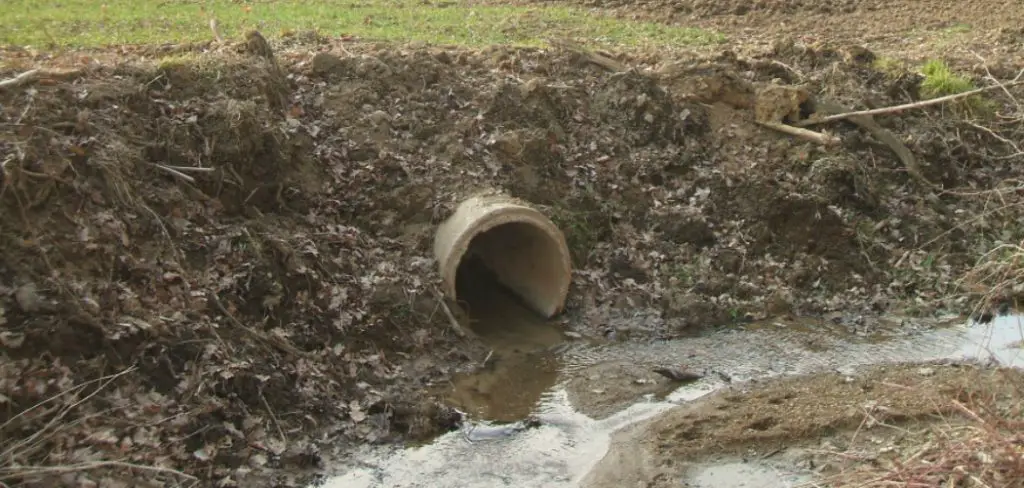
Recognizing the signs of malfunctioning leach lines early is key to addressing issues before they escalate into major concerns. This guide on how to tell if leach lines are bad aims to equip homeowners with the knowledge to identify failing leach lines, understand their potential impact, and seek professional assistance for resolution.
What is a Leach Line?
A leach line, also known as a drain field or leach field, is an underground network of perforated pipes that distribute effluent (wastewater) from the septic tank into the surrounding soil. These lines are typically buried in trenches and contain gravel or rock to aid in the absorption of effluent.
As the effluent percolates through the soil, natural processes filter and treat it, removing harmful bacteria and nutrients. This treated effluent then enters the groundwater system. You can think of leach lines as the final stage in a septic system‘s process of treating and disposing of wastewater.
Signs of Failing Leach Lines
There are several signs that indicate potential issues with leach lines. Some common signs to look out for include:
- Wet Spots or Pooling Water Above the Drain Field Area
- Slow Draining Sinks, Toilet, or Showers
- Unpleasant Odors Around the Septic Tank or Drain Field
- Lush and Overly Green Grass Above or Near the Leach Lines
If you notice any of these signs, it is crucial to act promptly. Ignoring them can lead to further issues such as sewage backups, contaminated groundwater, and costly repairs.
Causes of Leach Line Failure
Several factors can contribute to leach line failure, including:
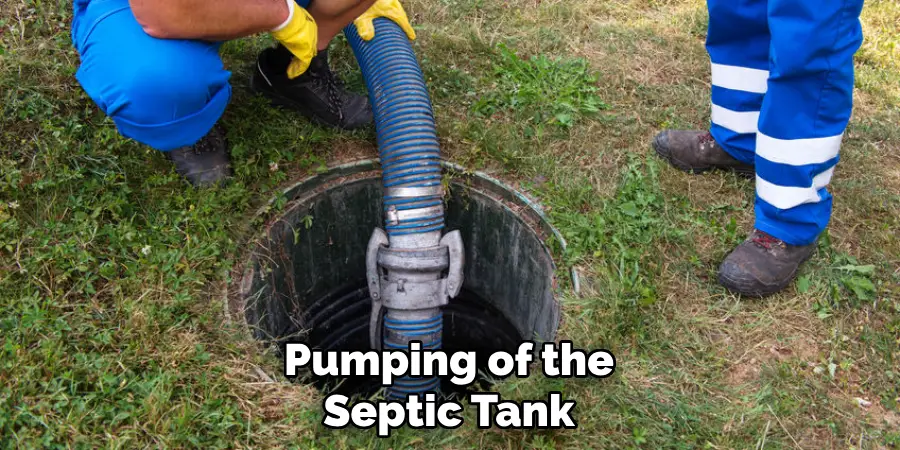
- Insufficient Maintenance or Pumping of the Septic Tank
- Blockages in the Pipes Caused by Solids, Grease, or Foreign Objects
- Tree Roots Infiltrating and Clogging the Lines
- Damage From Heavy Machinery or Vehicles Driving Over the Drain Field Area
It is essential to address these issues promptly to prevent further damage and potential health hazards.
11 Step-by-step Guidelines on How to Tell if Leach Lines Are Bad
Step 1: Locate Your Drain Field
The first step is to locate your drain field. It is usually found near the septic tank and can be identified by signs of soil disturbance or mounds of grass. The area should also be marked on your septic system’s as-built plans.
But if you cannot locate your drain field, it is best to call a professional for assistance. The last thing you want to do is start digging randomly and risk damaging your system. It can also be dangerous if you accidentally dig into the drain field’s pipes. The best course of action is to seek professional help in locating your drain field.
Step 2: Observe the Area
Take a walk around the drain field area and observe it closely. Note any changes, such as pooling water, wet spots, or excessively green grass. These can be signs of a failing leach line. You may also notice a foul odor in the area, which is another red flag.
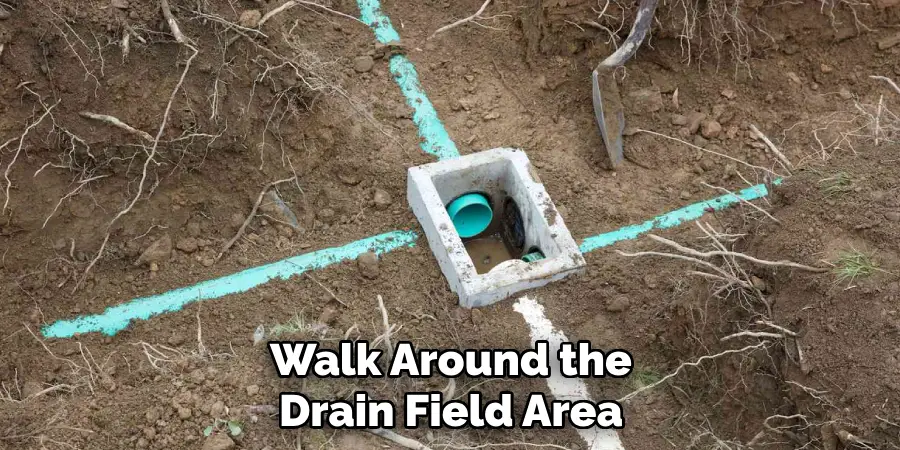
But keep in mind that the drain field is not supposed to smell bad; if it does, there could be an issue with your leach lines. You may also want to check the area after heavy rain or excessive water usage to see if there is any noticeable difference. It is normal for the drain field to be slightly wet after heavy usage, but it should not remain soggy.
Step 3: Check the Soil
The soil above your drain field should be well-drained and free of puddles. If you notice a soggy or spongy feeling when walking on it, this could indicate that the leach lines are not properly absorbing the effluent. You can also use a shovel to dig a small hole and check the soil’s saturation level.
If it is saturated, your leach lines may be failing. It is also crucial to check the soil’s color; healthy leach lines should have a dark, rich soil color due to the organic matter and nutrients present. However, if the soil is gray, this could indicate that the leach lines are not functioning correctly. The soil may also have a foul odor if the leach lines are failing.
Step 4: Inspect the Grass
Grass above or near your drain field area can provide valuable clues about your leach lines’ health. Pay attention to any changes in the grass’s appearance, such as unusually lush and green patches, as this can indicate that the leach lines are leaking effluent.
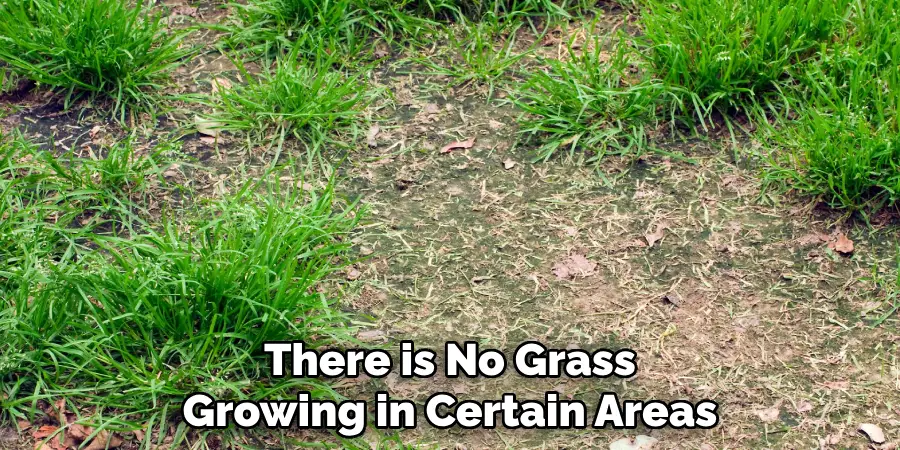
Conversely, if there is no grass growing in certain areas or the grass has turned brown, it could be a sign of clogged pipes preventing effluent from reaching the soil. You may also notice patches of standing water or algae growth, which can be signs of excessive effluent in the area. You can also perform a simple dye test to determine if there are any leaks in your leach lines.
Step 5: Check for Unpleasant Odors
As mentioned earlier, a foul odor around the drain field area is not normal and can indicate issues with leach lines. If you notice a strong sewage smell, it could be due to effluent surfacing or leaking from damaged pipes. It is crucial to address this issue promptly as it poses health hazards and potential environmental harm.
You may also want to check for any odors inside your home, as this can indicate that the septic tank is overflowing and needs pumping. The longer you ignore these odors, the worse the problem can become. But keep in mind that some odors may be normal after heavy usage or during certain weather conditions, so use your best judgment and address any concerns with a professional.
Step 6: Monitor Water Flow
Slow-draining sinks, toilets, or showers can be a sign of clogged pipes in your leach lines. If you notice that water is taking longer than usual to drain or if it backs up, this could indicate that the system is not working correctly. You can try using a plumbing snake to clear any obstructions in the pipes, but if the problem persists, it may be time to call a professional.
The longer you wait, the more severe the issue can become, and it may eventually lead to sewage backups. It is always best to address slow drains promptly, even if it turns out not to be a problem with your leach lines. It is better to be safe than sorry.

Step 7: Observe the Septic Tank
Your septic tank can provide valuable information about your leach lines’ health. If you notice an unusual amount of sludge or scum buildup in the tank, this could indicate that the septic tank is not being pumped regularly. This can lead to solids and grease clogging the leach lines, causing them to fail.
A professional inspection and pumping of the septic tank are recommended every 3-5 years, depending on your household’s size and usage. If you notice any cracks or damage to the septic tank, this could also be a sign of potential leach line issues. The tank’s condition can also give insight into the overall health of your septic system and whether any repairs or replacements are needed.
Step 8: Look for Signs of Damage
Damage to the drain field area or pipes can lead to leach line failure. Keep an eye out for any signs of damage, such as depressions in the ground, exposed pipes, or cracks in the soil.
These issues can be caused by heavy machinery or vehicles driving over the area, tree roots infiltrating and damaging pipes, or even natural disasters. It is crucial to address these damages promptly to prevent further harm to your leach lines. However, it is essential to leave any repairs or replacements to the professionals as attempting to fix them yourself can cause more harm than good.
Step 9: Consider Age and Maintenance
If your septic system is old or has not been properly maintained, this could be a significant factor in leach line failure. Over time, the soil can become compacted or clogged with solids, reducing its ability to absorb effluent. This can also happen if the septic tank is not pumped regularly, leading to solids clogging the leach lines.
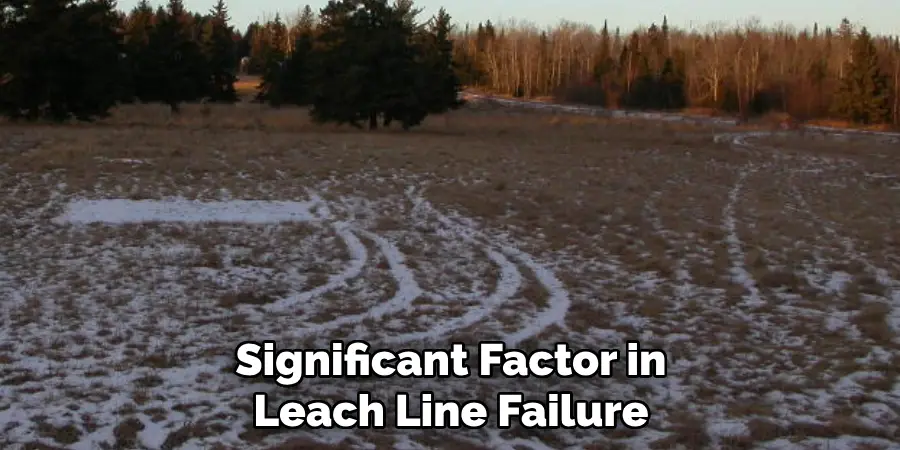
It is essential to follow proper maintenance practices and have your septic system inspected regularly to prevent leach line failure. You may also want to consider upgrading your system if it is too old or outdated. It may be a pricier investment upfront, but it can save you from costly repairs and replacements in the long run.
Step 10: Call a Professional
If you have observed any of the above signs or have concerns about your leach lines’ health, it is crucial to call a professional. They can perform a thorough inspection and provide recommendations for repairs or replacements if necessary.
It is always best to address leach line issues promptly to prevent further damage and costly repairs in the future. Remember that proper maintenance and regular inspections are key to keeping your leach lines functioning correctly and extending their lifespan. With these tips, you can keep an eye on your leach lines’ health and catch any issues before they become major problems.
Following these steps on how to tell if leach lines are bad and being proactive about maintaining your leach lines will ensure that your septic system remains in good working condition. Remember to always consult a professional for any repairs or replacements, and never attempt to fix issues yourself.
By taking proper care of your leach lines, you can prevent costly repairs and protect the environment. So keep an eye out for any warning signs, follow proper maintenance practices, and call a professional if you have any concerns. Your leach lines will thank you!
Consulting with Septic System Professionals
While it is essential to monitor your leach lines’ health, it is also crucial to seek advice and assistance from septic system professionals. They have the knowledge and experience to properly inspect, maintain, and repair your septic system and leach lines.
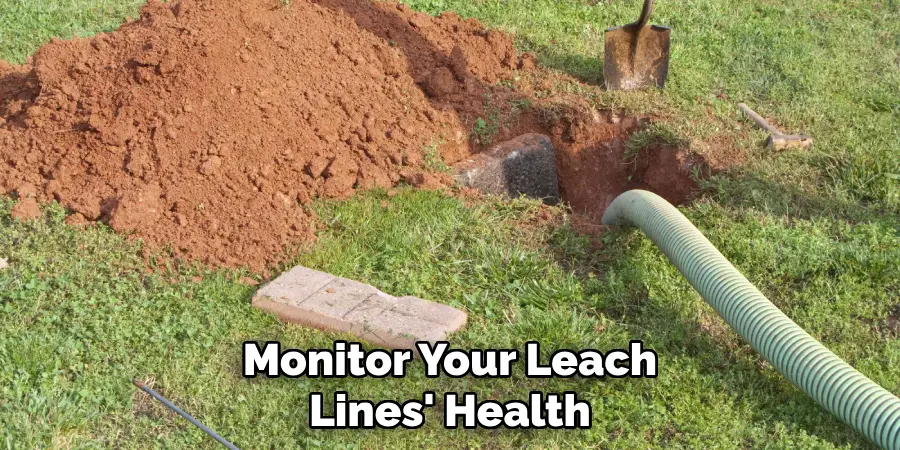
By consulting with them regularly, you can ensure that your system remains in good working condition and catch any issues before they become severe. They can also provide recommendations for proper maintenance and answer any questions or concerns you may have about your septic system. Remember that prevention is key when it comes to leach lines, so don’t hesitate to call a professional if you have any doubts or concerns.
Identifying and Addressing Common Leach Line Issues:
Some common issues that may arise with leach lines include clogs, breaks or cracks in pipes, and damage to the drain field. These issues can be caused by a variety of factors, such as heavy usage, lack of maintenance, or external damage.
Identifying these problems early on is crucial in preventing further damage and costly repairs. Once identified, it is essential to address these issues promptly and seek professional help if needed. With proper care and maintenance, leach lines can last for many years, but neglect or lack of attention can lead to major problems down the road.
Environmental Considerations and Health Risks
Leach lines play a vital role in protecting the environment by properly treating and disposing of wastewater. When leach lines fail, it can lead to contamination of groundwater and nearby bodies of water, causing harm to both human health and the ecosystem. It is crucial to address any issues with leach lines promptly to prevent potential environmental hazards.
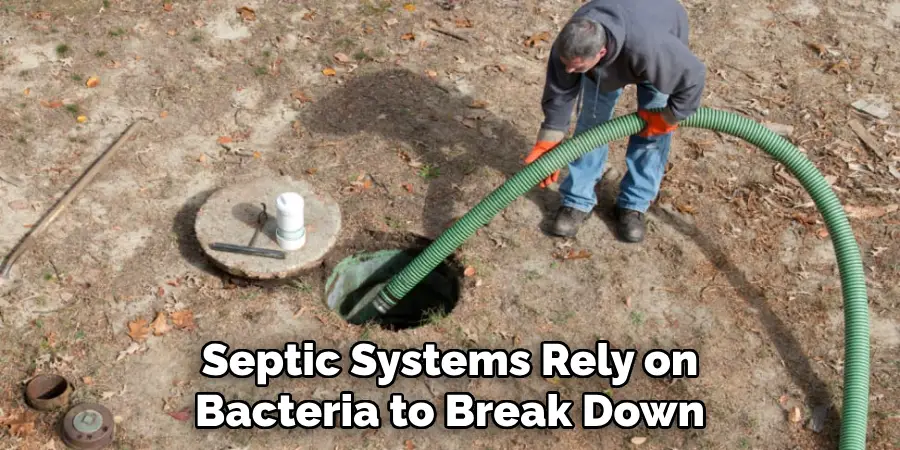
Moreover, septic systems rely on bacteria to break down solid waste, and leach lines play a significant role in this process. Therefore, it is crucial to maintain a healthy balance of bacteria in your septic system by avoiding the use of harsh chemicals or excessive water usage that can disrupt their natural function.
Understanding Regulatory Requirements
Leach lines must meet certain regulatory requirements to ensure proper functioning and prevent harm to the environment. Each state or local government may have specific guidelines in place, so it is essential to research and understand these regulations in your area.
Some common requirements include regular inspections, pumping of septic tanks every 3-5 years, and not overloading the system with excessive water usage or harsh chemicals. By following these regulations, you can avoid potential fines and ensure the proper functioning of your septic system.
Preventive Maintenance Practices
To extend the lifespan of your leach lines and keep them functioning correctly, it is essential to follow proper maintenance practices. Regularly pumping the septic tank, monitoring water usage, and avoiding dumping harsh chemicals down drains are all simple yet effective ways to prevent leach line issues.
Additionally, being mindful of what goes into your septic system, such as non-biodegradable items or excessive fats, can also help prevent clogs and extend the lifespan of your leach lines. By following these preventive maintenance practices, you can save yourself from costly repairs and ensure the proper functioning of your septic system for years to come.
Frequently Asked Questions
Q: How Often Should I Have My Septic Tank Inspected?
A: It is recommended to have your septic tank inspected every 3-5 years, depending on household size and usage. You should also have it pumped during this time if necessary. The frequency of inspections and pumping may vary depending on the type of septic system you have, so consult a professional for specific recommendations.
Q: Can I Use Additives to Improve Leach Line Function?
A: It is not recommended to use additives in your septic system as they can disrupt the natural balance of bacteria and enzymes that help break down solids. Proper maintenance and regular inspections are more effective in prolonging the lifespan of your leach lines.
Q: Can I Plant Trees or Shrubs Over My Leach Lines?
A: It is not recommended to plant trees or shrubs over your leach lines as their roots can infiltrate and damage the pipes. This can also cause compaction of the soil, reducing its ability to absorb effluent. If you do want to plant in this area, consult a professional for advice on suitable plants and the proper distance from your leach lines. Overall, it is crucial to be mindful of the location of your leach lines when landscaping.
Q: What Should I Do if My Leach Lines Fail?
A: If you suspect that your leach lines have failed, it is essential to call a professional immediately. They can perform a thorough inspection and provide recommendations for repairs or replacements if necessary. Do not attempt to fix the issue yourself as it can cause more harm than good.
Conclusion
In summary, identifying the early signs of failing leach lines is essential to maintaining the functionality and efficiency of your home’s septic system. Signs such as unpleasant odors, unusually lush vegetation, soggy ground above the leach field, and backups in plumbing fixtures are indicative of potential issues with your leach lines.
Recognizing these warning signs early and seeking professional assessment and intervention can prevent significant environmental damage and avoid costly repairs or replacements. Regular maintenance and inspections of your septic system are critical in ensuring a healthy, efficient, and long-lasting waste disposal system. Thanks for reading this article on how to tell if leach lines are bad.

